Introducing Tsubaki products playing active roles in each tire manufacturing process.
Tire Manufacture
Component Process
Rubber sheets manufactured in the mixing (smelting) process are processed into components that form tires, such as the tread and carcass.
Plastic Modular Chains made of plastic are used for tread cooler conveyors, and Linipower Jacks that enable stable positioning and load maintenance are used for calendar rolls.
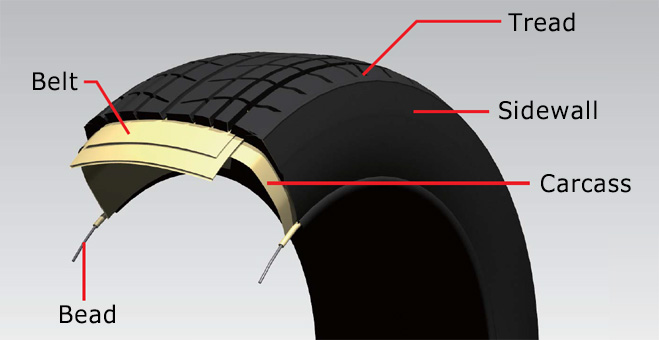
- Tread
-
- The component that is in contact with the road surface, which is processed to the most suitable thickness and shape.
- Carcass
-
- The component that forms body of the tire. It is a sheet with a cord layer coated with rubber.
- Bead
-
- Bundles of piano wires, which are useful for fixing the carcass, or fixing it to the wheel.
Tread Cooler Conveyor -- Plastic Modular Chain
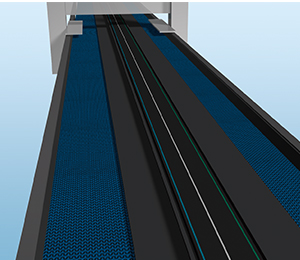
Tread Cooler Conveyors
Treads, a component of tires, are cooled to normal temperature by dropping them in water while they are hot after the rolling process.
All-plastic chain with excellent water-repellent and anti-rust properties is recommended for this process, which uses a lot of water for cooling.
- Clean
- Easy to maintain
- Applications: WT2706-K Series
-
- Chain pitch: 27.2 mm, link height: 8.7 mm
- Just a single screwdriver is required for cutting and connecting, allowing sectional replacement.
- Plastic plugs that are detectable with metal detectors are also available.
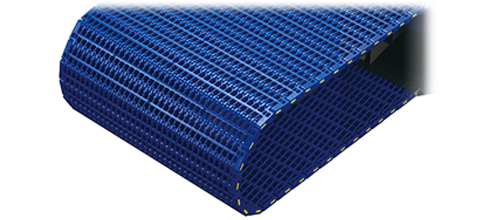
Details on Plastic Modular Chain
Product Inquiries
Calendar Roll -- LINIPOWER® JACK
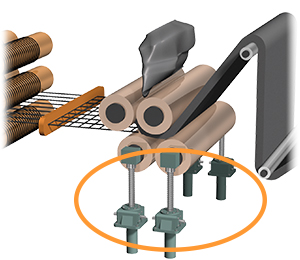
Calendar Roll
The rubber sheet rolled in the previous process is crimped onto the cord layer, and rolled again into a thin sheet with a prescribed thickness.
A jack made of a combination of trapezoidal screw or ball screw and worm gear.
Lini Power Jacks with trapezoidal screws are recommended in this process, in which rubber is rolled to a certain thickness. Using the motor together with the brake enables stable positioning, load maintenance, and power savings.
- Maintains thrust
- Stopping accuracy
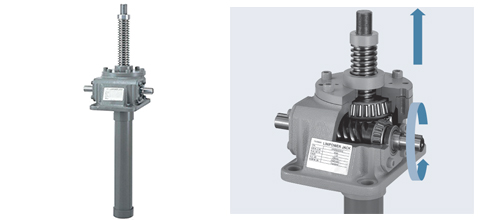
Details on Linipower Jack
Product Inquiries





















